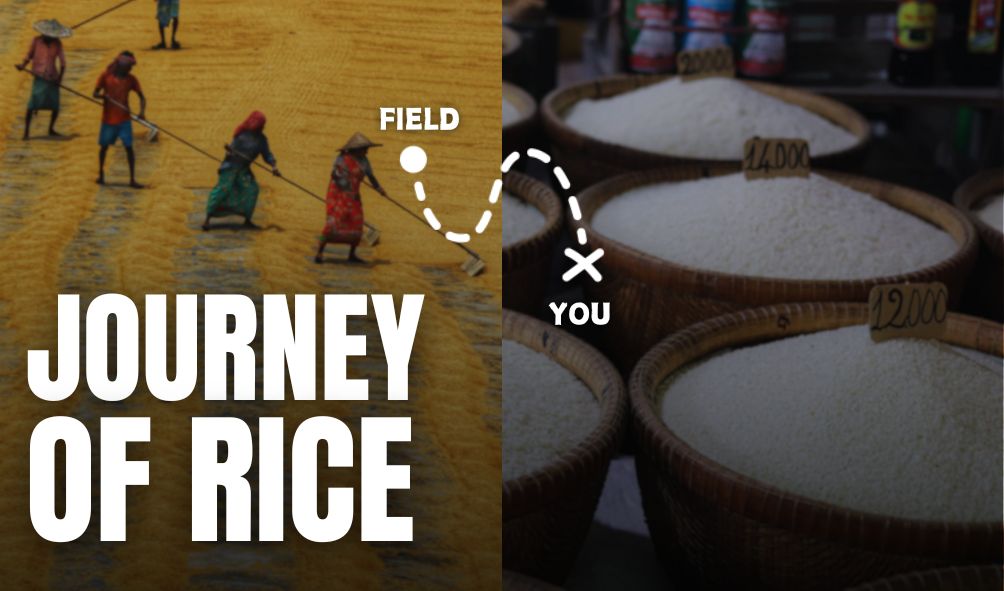
The Journey of Rice: From Field to Polished Perfection
Share
Rice is a staple food for billions of people worldwide, and its journey from the field to the table is a fascinating process that involves careful cultivation, harvesting, and milling. At Kothari Mill Stores, we are proud to support this journey by supplying essential equipment for rice mills in Raipur. In this blog post, we’ll explore the entire process of rice production, highlighting the machinery involved along the way.
Step 1: Cultivation and Harvesting
The journey begins in the lush fields where rice is cultivated. Farmers carefully plant rice seeds, nurturing them with water and nutrients. Once the rice plants mature, they are harvested using specialized machinery such as combine harvesters, which efficiently cut and collect the rice stalks.
Step 2: Threshing
After harvesting, the rice must be separated from the husk. This process, known as threshing, is often done using a rice huller. The rice huller utilizes rubber rolls to gently separate the rice grains from the husks without damaging them. This is where quality machinery plays a crucial role, ensuring that the grains are intact and ready for further processing.
Step 3: Milling
Once the rice has been hulled, it goes through the milling process. This involves several steps:
- De-husking: The rice grains are passed through a de-husker, which removes the outer husk.
- Polishing: The next step is polishing the rice to enhance its appearance. A rice polisher smooths out the surface of the grains, giving them a shiny finish.
- Grading: After polishing, the rice is graded based on size and quality. This ensures that only the best grains reach consumers.
Key Machinery in Rice Milling
At Kothari Mill Stores, we provide a range of machinery essential for these processes, including:
- Rice Hullers: Critical for effective de-husking.
- Rubber Roll Machines: Used in the polishing phase to achieve that perfect shine.
Maintenance of Machinery
After several cycles of processing, machinery will require maintenance to ensure continued efficiency. This includes the replacement and servicing of:
- V-Belts: Essential for transferring power between components.
- Motors: The driving force behind milling operations.
- Pulleys: Important for managing speed and torque in machinery.
- Bearings: Crucial for reducing friction and wear in moving parts.
Proper maintenance of these components helps prolong the life of the machinery and ensures optimal performance.
Step 4: Packaging
Once the rice is polished and graded, it is packaged for distribution. Proper packaging ensures that the rice remains fresh and free from contaminants as it travels to markets and homes.
The Role of Kothari Mill Stores
Kothari Mill Stores has been a trusted partner for rice mill operators in Raipur since 1977. Our commitment to quality and service ensures that businesses have access to the essential equipment they need to thrive. Whether you are looking for rice hullers, rubber roll machines, or related spare parts, we have you covered.
For more information on our products, check out our Rice Mill collection.
Visual Representation of the Rice Production Process
Below is a simplified flowchart of the rice production process:
Cultivation → Harvesting → Threshing → Milling → Packaging
- Cultivation: Seed planting and nurturing.
- Harvesting: Using combine harvesters.
- Threshing: Utilising rice hullers.
- Milling: De-husking, polishing, and grading.
- Packaging: Ensuring freshness for consumers.
Conclusion
The journey of rice from the fields to polished perfection is a complex process that relies on various technologies and machinery. At Kothari Mill Stores, we are dedicated to providing the equipment necessary for this journey, supporting local rice mills in Raipur and beyond. By understanding the intricacies of rice production, we can appreciate the effort that goes into bringing this essential staple to our tables.
